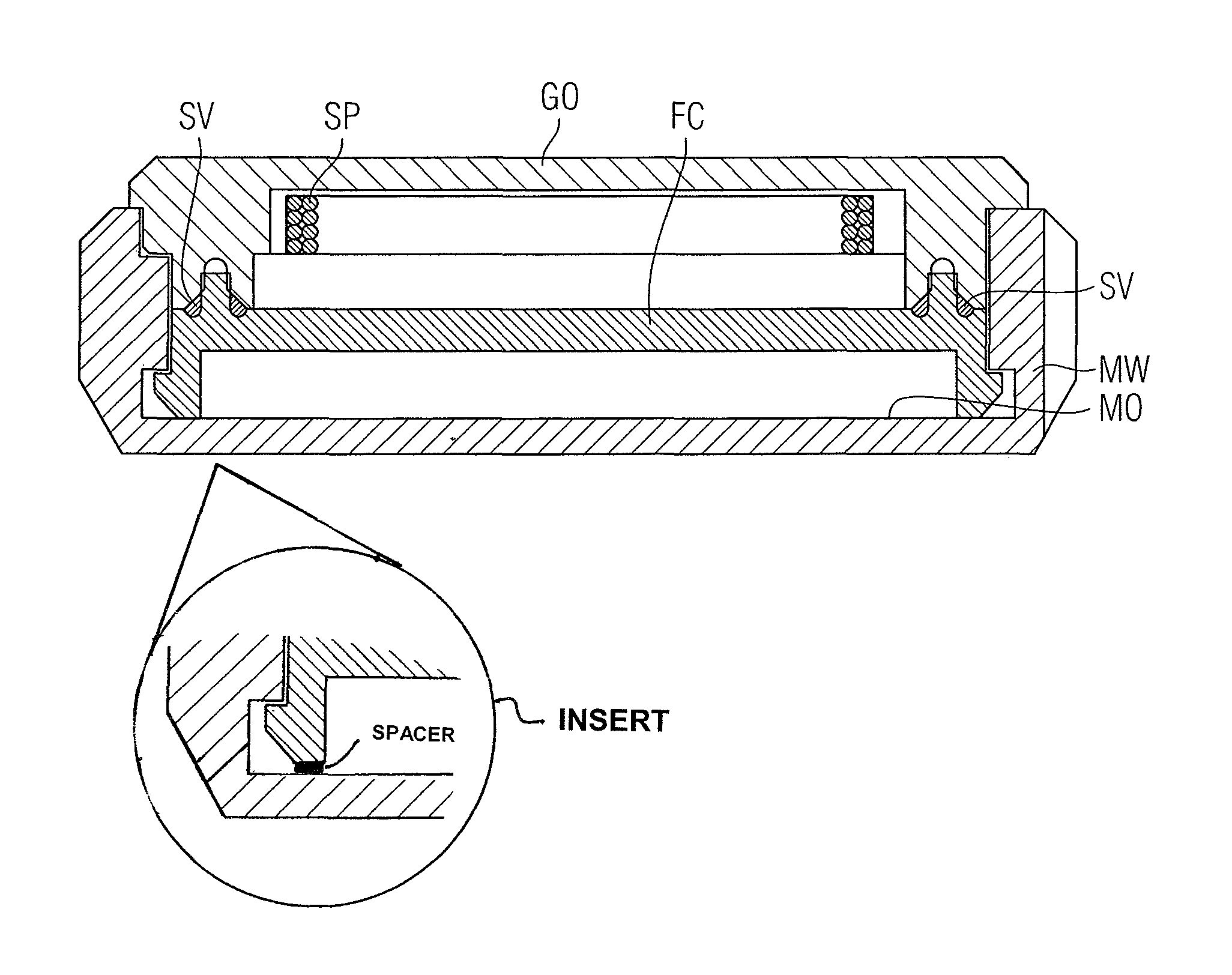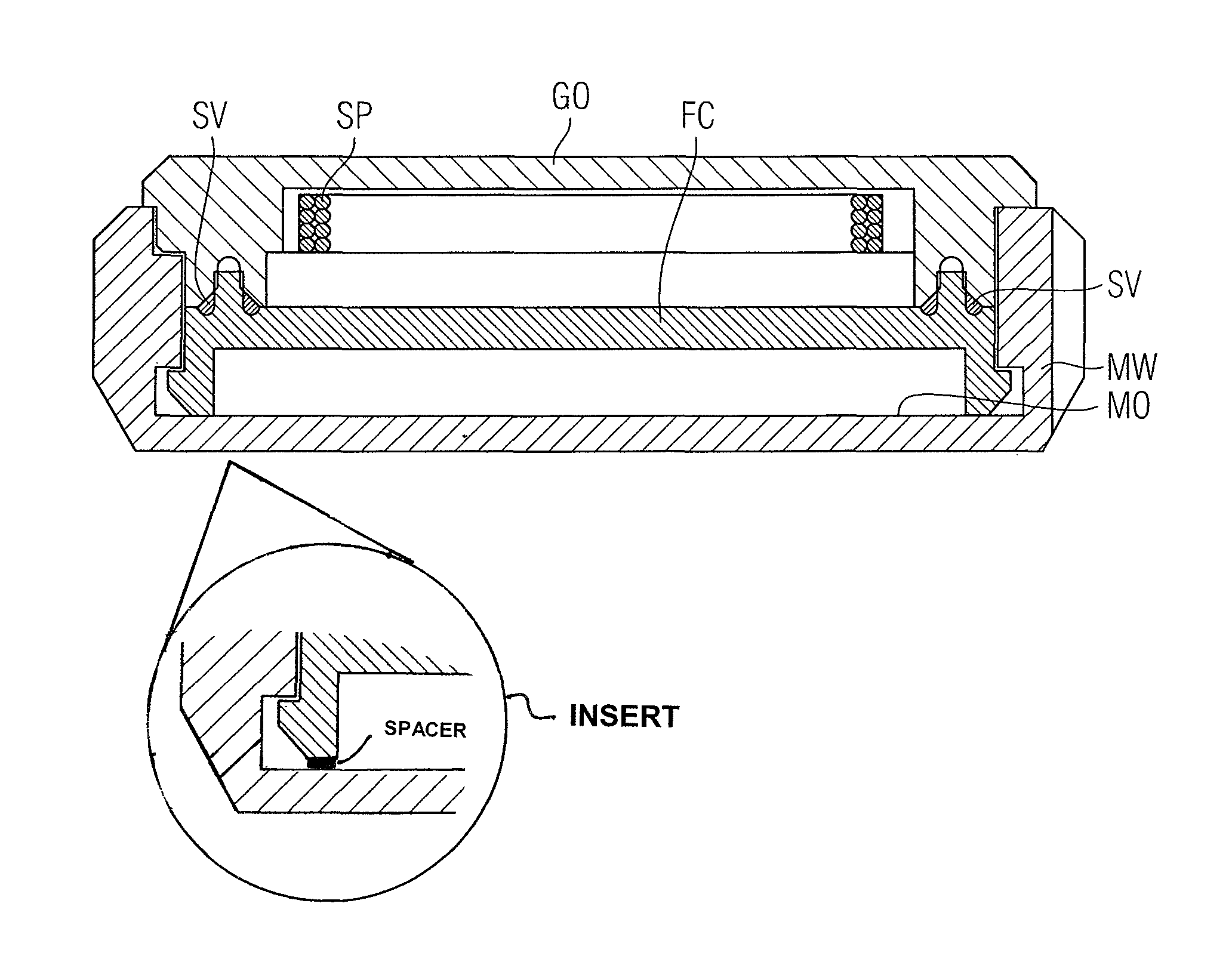Inductively coupled radio frequency identification (RFID) transponder
a radio frequency identification and transponder technology, applied in the field of radio frequency identification (rfid) transponders, can solve the problems of introduction of a ferrite core, no longer available for supplying rfid transponders, and undesirable attenuation, etc., to achieve mechanical robustness, reduce the structural size of rfid transponders, and reduce the cost of manufacturing. simple and flexible
- Summary
- Abstract
- Description
- Claims
- Application Information
AI Technical Summary
Benefits of technology
Problems solved by technology
Method used
Image
Examples
Embodiment Construction
[0019]The FIGURE is a cross-sectional view illustrating a metallic workpiece MW composed of a ferromagnetic material having a metallic surface MO. Here, the metallic workpiece MW is only illustrated partially, that is to say in a region having a depression for receiving an RFID transponder. Instead of the configuration of a depression for receiving or for latching in an RFID transponder, it is also possible to consider smooth surfaces of metallic workpieces MW, onto which RFID transponders can be adhesively bonded, screwed or fixed in some other way. The RFID transponder has operating electronics (not illustrated here in detail) connected to a transmitting and receiving coil SP. The sectional illustration illustrates only a few windings of the coil SP by way of example. Although the RFID transponder shown here is constructed substantially in a circular manner, i.e., in a rotationally symmetrical manner, in a plan view the coil SP can, for example, also be shaped in a rectangular fas...
PUM
 Login to View More
Login to View More Abstract
Description
Claims
Application Information
 Login to View More
Login to View More - R&D
- Intellectual Property
- Life Sciences
- Materials
- Tech Scout
- Unparalleled Data Quality
- Higher Quality Content
- 60% Fewer Hallucinations
Browse by: Latest US Patents, China's latest patents, Technical Efficacy Thesaurus, Application Domain, Technology Topic, Popular Technical Reports.
© 2025 PatSnap. All rights reserved.Legal|Privacy policy|Modern Slavery Act Transparency Statement|Sitemap|About US| Contact US: help@patsnap.com


